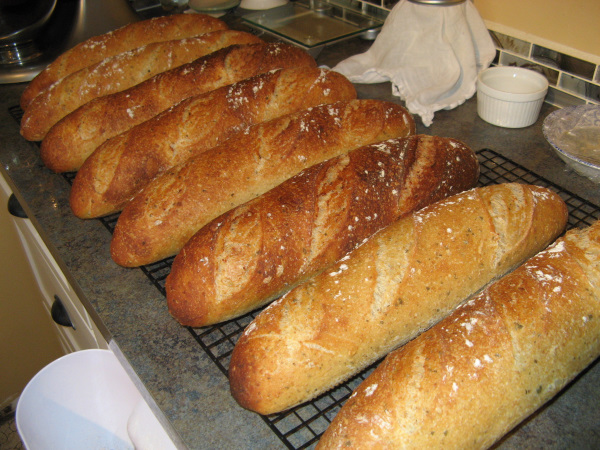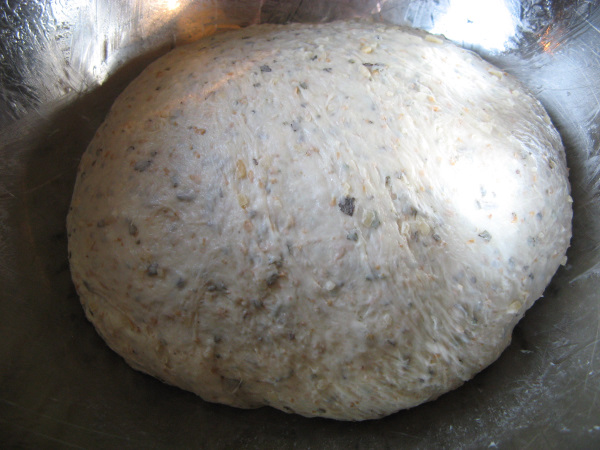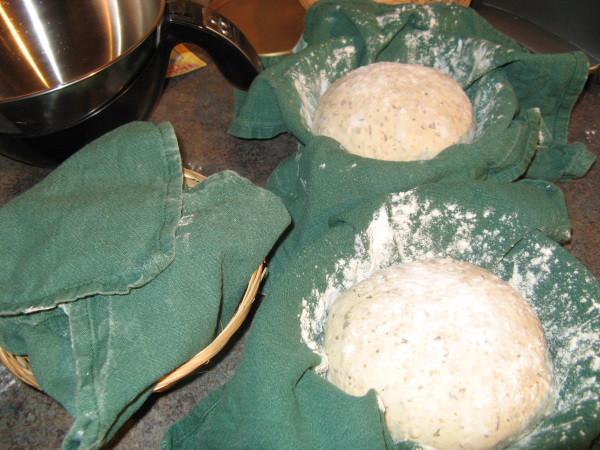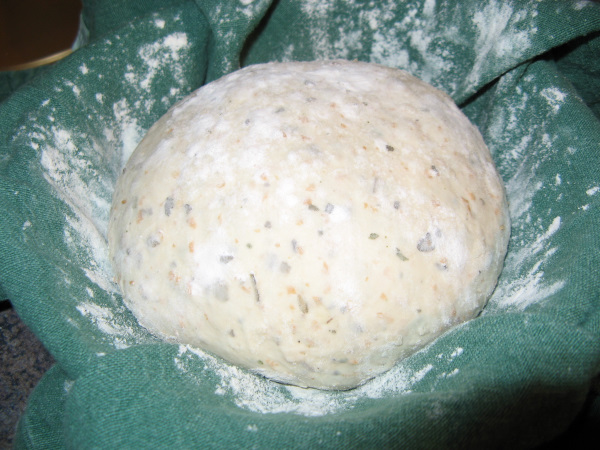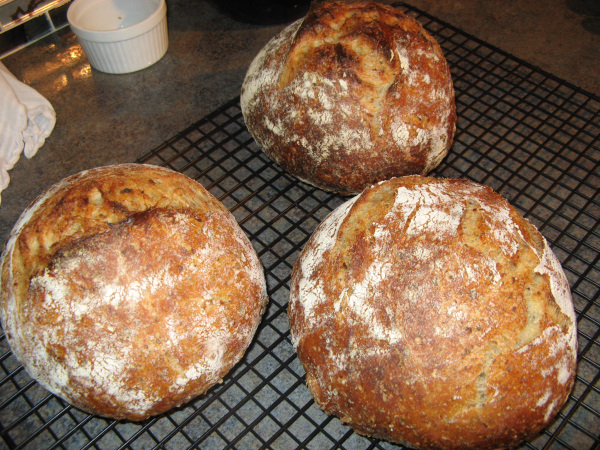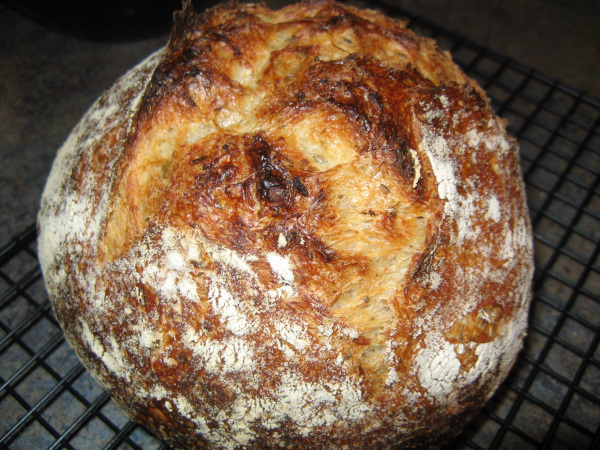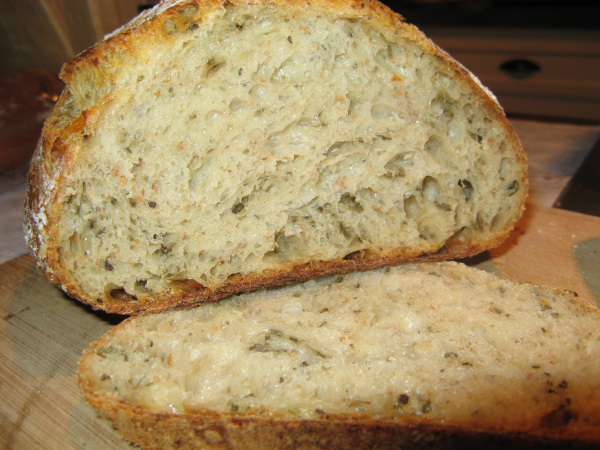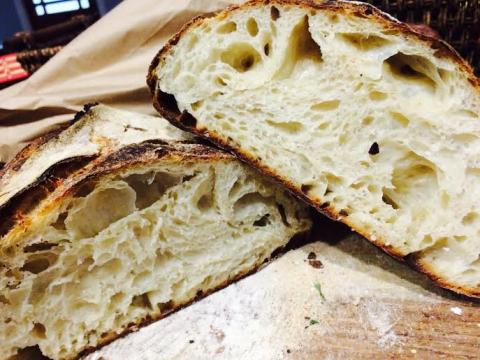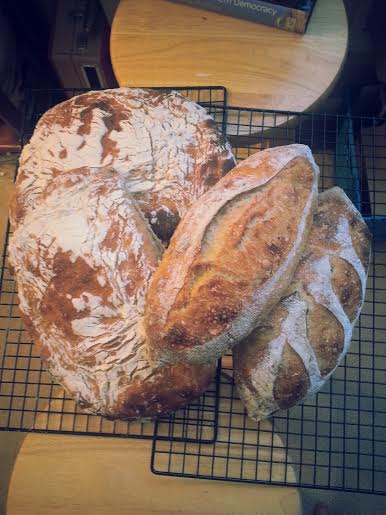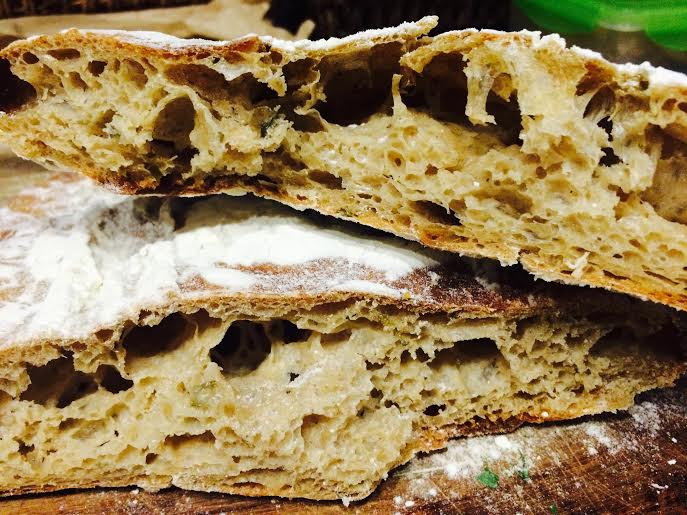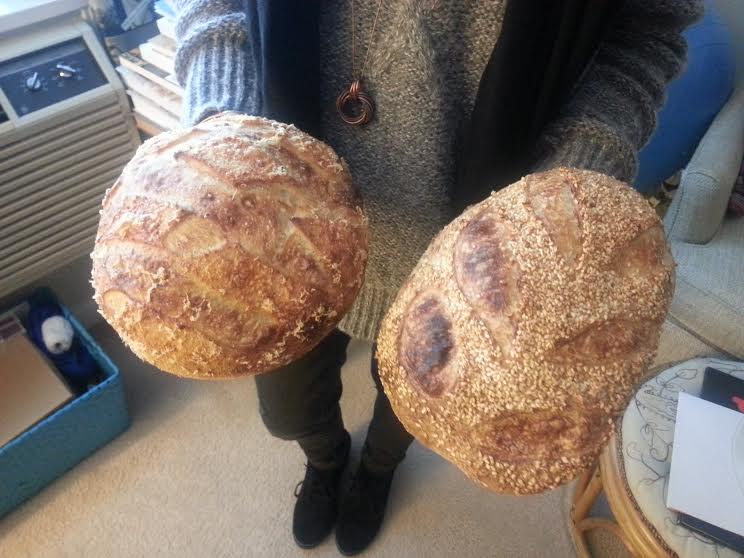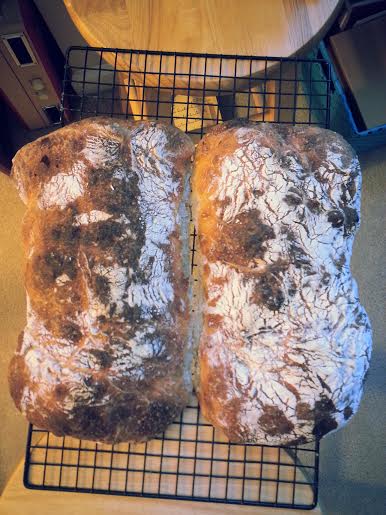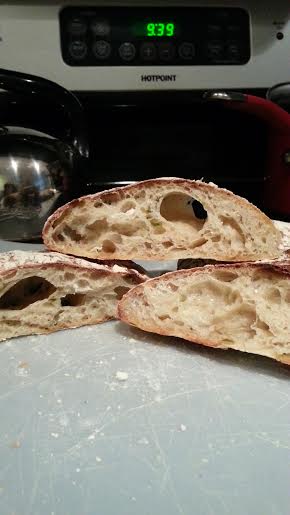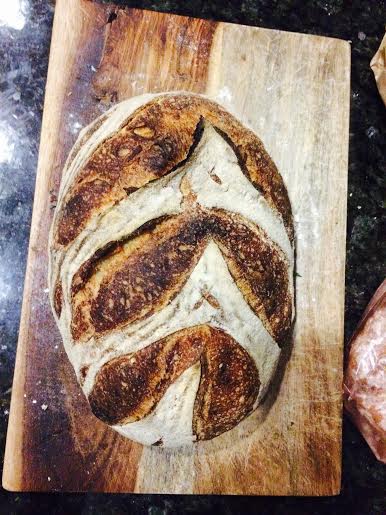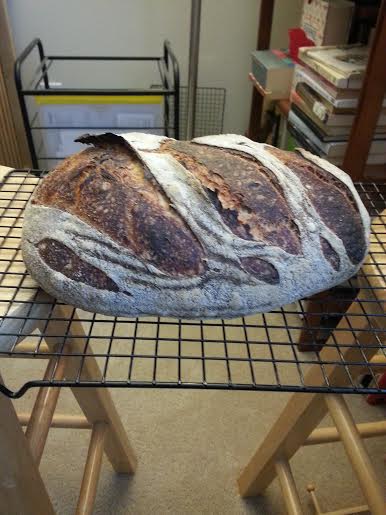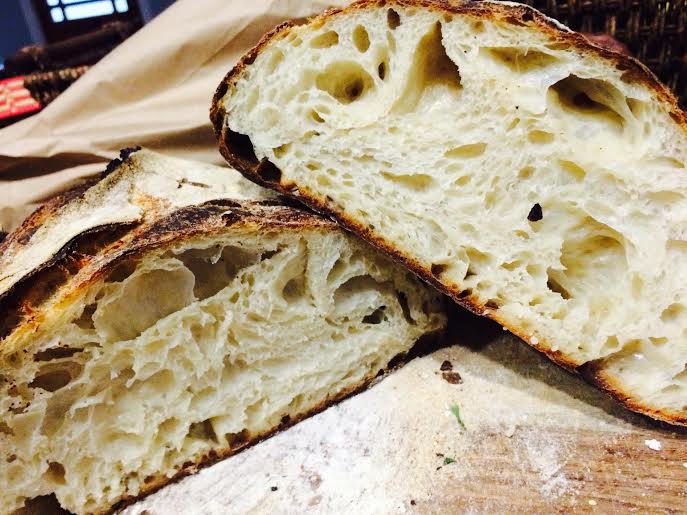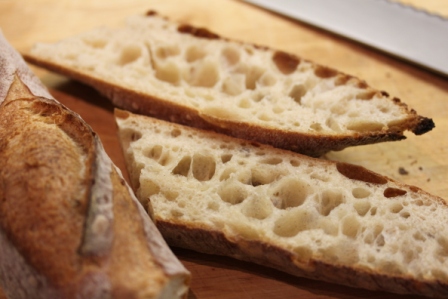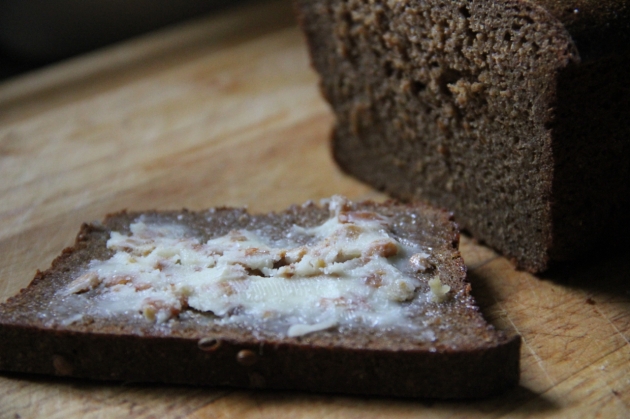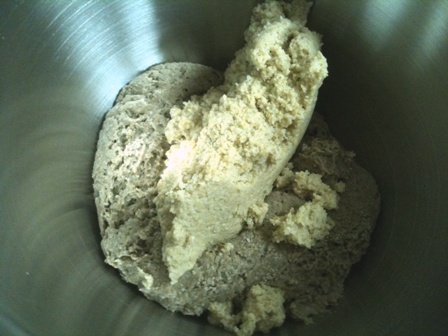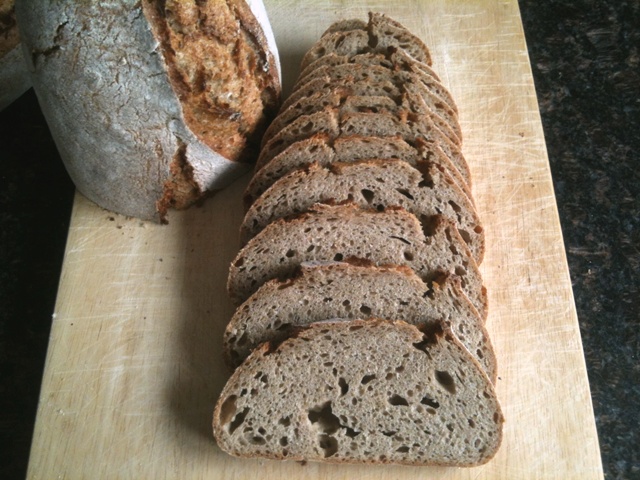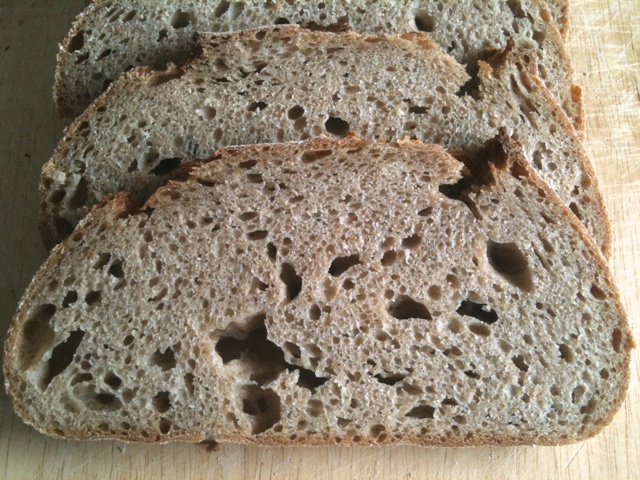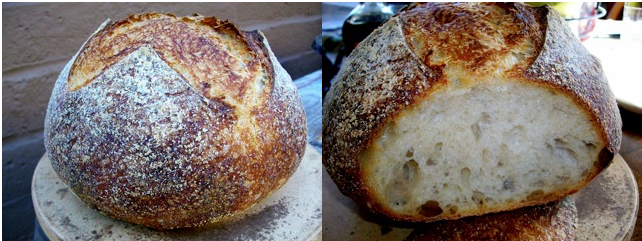
Mini's 100% Dark Rye & Chia Recipe ...Love at 104% hydration
This rye recipe is my Chilean version of my favorite rye ratio recipe using a rye sourdough starter and the addition of chia seeds that increase the dough hydration yet maintain a nice shape. Use a large Dutch oven for a free form shape.
I designed this recipe for one narrow tapered loaf pan: cm: 30 x 11 x 7.5 or inches: 11 3/4 x 4 1/4 x 3
It is my basic rye recipe (starter:water:flour) (1: 3.5 : 4.16) plus 6.1% chia (on total flour weight including flour in the starter) plus 4 times the chia weight in water added to the dough. Also added nuts, seeds and 90g to 100g arbitrarily selected moist rye altus (day old bread.)
DARK RYE & CHIA BREAD
The wet:
- 175g vigorous peaking rye starter 100% hydration
- 90g moist rye altus
- 812g water 24°C (75°F)
1077g
The dry:
- 728g rye flour (dark rye 14% protein)
- 50g chia seeds
- 17g salt (2%)
- 17g bread spice (2%) (toasted crushed mix: coriander, fennel, caraway seed)
- 17g toasted sesame seed (2%)
829g (total dough so far 1906g)
(optional:)
- 4g black pepper (0.46%)
- 100g broken walnuts
- 150g chopped Araucaria Pine nuts
- sunflower seeds to line bottom and/or sides of buttered form
Method:
Inoculate (1:5 to 1:10) sourdough starter soon enough to have a vigorous starter when ready to mix up dough.
Plan to bake in 3 hours from the time you start combining liquids with the flour to make dough.
Combine liquids and break apart floating altus. Stir dry ingredients and add to liquids stirring until all dry flour is moistened. Scrape down sides of bowl, cover, let stand 2 hours. No kneading ever! Dough will stiffen as it rests. (Another order for combining is to add the chia and spices to the wet ingredients and allow to swell 15 minutes before adding flour, salt and nuts. Not sure if it makes a difference but if you find you're getting a gummy crumb, let the chia soak in the water and swell before adding the flour.)
Smear bread pan with butter and dust/coat with raw seeds, crumbs or flour. Spoon or plop dough (trying not to trap air) into form or floured banneton. (The recipe lends itself well to free form in a large Dutch Oven.) Use a wet spatula or wet fingers & hands to shape dough. Pile the dough up higher in the center for a nice rising shape. Sprinkle with seeds and press lightly into dough while making a nice dome shape.
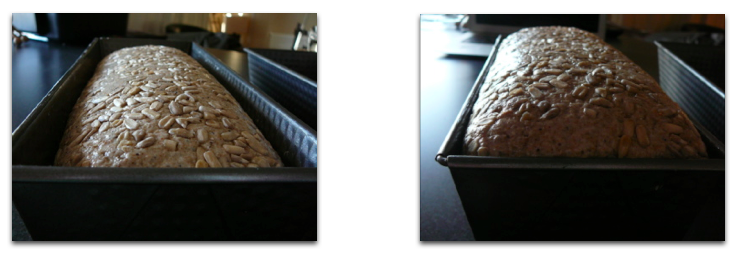
Let rise about an hour. Meanwhile heat oven 200°C to turn down to 185°C (365°F) 15 minutes into the bake. Make a cover for the loaf from a double layer of alufoil or flip an identical pan over the top. Leave room for loaf expansion.
When ready dock, take a wet toothpick and poke about one hole every inch, all over, toothpick deep. Wait a few minutes and smoothen over with a wet spatula. Dough is ready to dock when you see the dough surface threatening to release trapped gasses under the surface. One or two little pin hole bubbles is enough to start docking.
Spray or rinse the inside of foil or empty bread pan cover with water and cover the dough to trap steam during the bake. Bake for about 40 minutes on the lowest rack, then rotate and remove the protective cover to brown the loaf top. Finish the loaf in another 20-30 min for a rough total of one hour baking time. Inside temp should reach 94°C, sound hollow, but I tend to shoot for 96°C or 205°F. Cool on rack. Wrap when cold.
Here is the cold loaf (after 12 days, last 6 in the fridge) and you can see how much the dough rose. The shaped dough would have been rounded under the rim. There are no nuts in this loaf other than what came from frozen stored altus.

Free form using floured rice sieve: Oops, I spy a few docking holes!

Have fun, I do! Really proud of that one!



